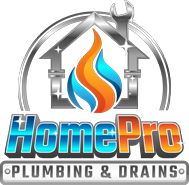▷5 Tips To Install Your Shower Valves In San Diego
5 Tips To Install Your Shower Valves In San Diego
Shower valves play a crucial role in regulating water flow and temperature, ensuring a comfortable and efficient showering experience. Installing them correctly is essential for optimal functionality and longevity. Whether you’re a seasoned DIY enthusiast or a novice, here are five tips to help you navigate through the installation process smoothly:
Select the Right Valve Type
Before diving into the installation process, ensure you have chosen the appropriate shower valve for your needs. There are various types available, including pressure-balancing valves, thermostatic valves, and manual valves. Each type serves a specific purpose, such as maintaining constant water temperature or adjusting flow rate. Consider factors like water pressure, desired features, and compatibility with your existing plumbing system when making your selection.
Prepare the Work Area
Preparation is key to a successful installation. Start by turning off the water supply to the shower area to prevent any leaks or water damage during the process. Remove any existing fixtures or components, such as old valves or trim plates, and clean the area thoroughly. Inspect the plumbing connections for any signs of damage or corrosion, and make any necessary repairs or replacements before proceeding with the installation.
Follow Manufacturer Instructions
Always refer to the manufacturer’s instructions provided with your shower valve for guidance during installation. These instructions contain valuable information regarding proper assembly, placement, and connection of the valve components. Pay close attention to details such as recommended tools, sealants, and installation techniques to ensure a secure and leak-free fit. Deviating from the manufacturer’s guidelines could lead to installation errors and potential issues down the line.
Test for Leaks
Once the shower valve is installed, it’s essential to test it for leaks before completing the installation. Turn the water supply back on and slowly increase the pressure to check for any signs of leakage around the valve and connections. Use a flashlight to inspect hard-to-reach areas and tighten any loose fittings as needed. Performing a thorough leak test ensures that your installation is watertight and minimizes the risk of future water damage or mold growth.
Install Trim Kit
After confirming that the valve is leak-free and functioning correctly, it’s time to install the trim kit. The trim kit includes components such as handles, escutcheons, and showerheads that add the finishing touches to your shower setup. Follow the manufacturer’s instructions to properly align and secure each trim piece in place. Take care not to overtighten screws or fittings, as this could damage the trim or cause it to sit unevenly against the wall.
FAQs
Can I Install A New Shower Valve Myself, Or Should I Hire A Professional Plumber?
While some DIY enthusiasts may feel comfortable tackling a shower valve installation themselves, it’s essential to assess your skills and familiarity with plumbing tasks. If you’re unsure or inexperienced, hiring a professional plumber can ensure the job is done correctly and minimize the risk of costly mistakes or complications.
How Long Does It Typically Take To Install A Shower Valve?
The time required to install a shower valve can vary depending on factors such as the complexity of the installation, the type of valve being installed, and any existing plumbing issues that need to be addressed. On average, a straightforward installation may take a few hours to complete, while more complex projects could take longer.
What Maintenance Is Required For Shower Valves After Installation?
Regular maintenance is essential to keep shower valves operating smoothly and prevent issues such as leaks or corrosion. Periodically check for any signs of leakage, mineral buildup, or damage to the valve components. Clean the valve and trim regularly to remove dirt, soap scum, and other debris that could affect performance. If you encounter any problems, such as inconsistent water temperature or pressure, promptly address them to prevent further damage or inconvenience.
Conclusion
Installing shower valves correctly is crucial for ensuring a reliable and comfortable showering experience. By following these five tips and referring to manufacturer instructions, you can tackle the installation process with confidence. Remember to test for leaks, choose the right valve type, and consider hiring a professional if you’re unsure about your DIY skills. With proper installation and maintenance, your shower valves will provide years of dependable service.
Give Home Pro Plumbing a call right away to learn more about how our experts can help with leak detection in San Diego, CA.
Our Plumbing & Leak Detection Services
Related Posts

▷5 Benefits of Hydro Jet Plumbing: A Comprehensive Guide In San Diego
5 Benefits of Hydro Jet Plumbing: A Comprehensive Guide In San Diego Hydrojet plumbing is a…

▷Essential Tips for Installing a Heat Pump Water Heater In San Diego
Essential Tips for Installing a Heat Pump Water Heater In San Diego Did you know…

